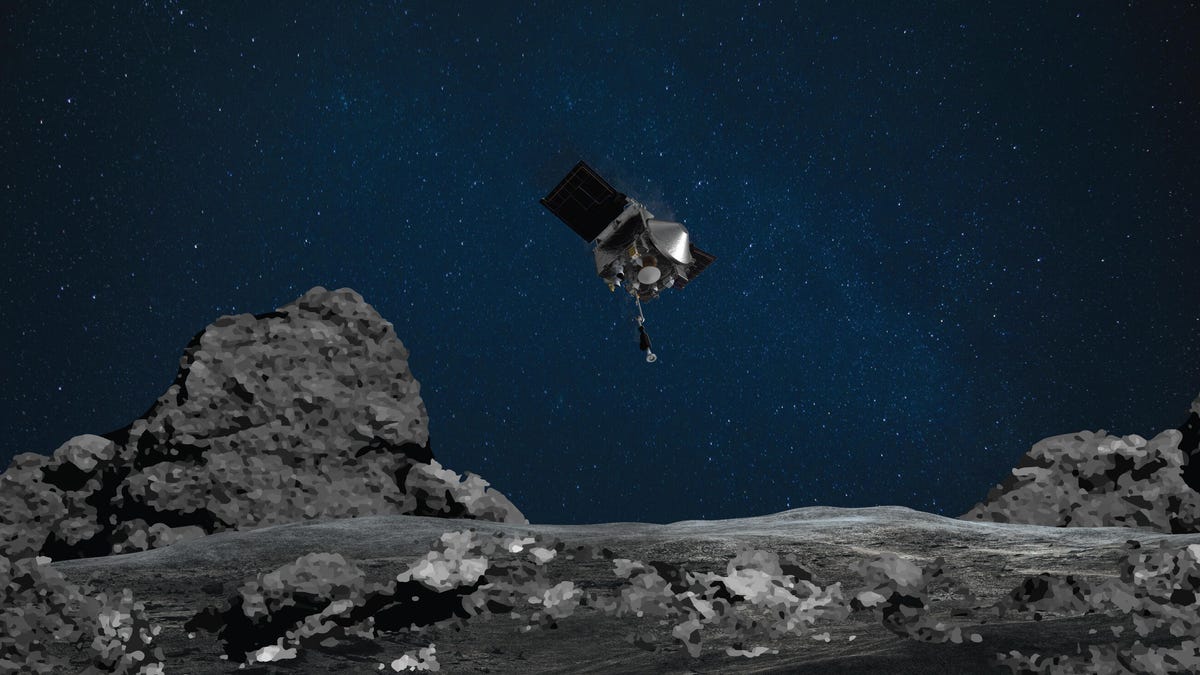NASA finally sets date for tricky Osiris-Rex asteroid touchdown
Grabbing a chunk of asteroid Bennu won't be easy.
It will be a cosmic caress years in the making. On Oct. 20, NASA's Osiris-Rex spacecraft will touch asteroid Bennu in an attempt to snag a sample of the surface. NASA announced the target date on Wednesday. The space agency is hoping to bring a bit of the asteroid back home.
It's been a long journey just to reach a touchdown date. The spacecraft has already scooted up close to Bennu's surface and snapped tons of images. Bennu turned out to be surprisingly rocky, which made choosing a usable sample-collection site particularly challenging. The winning location is nicknamed Nightingale.
The Touch-and-Go (TAG) sample collection will involve Osiris-Rex contacting Bennu for about five seconds. It will fire off a charge to shake up the surface and then collect a sample and back away to safety. The spacecraft is prepared to perform this maneuver three times if necessary, but NASA hopes the first one will do the trick.
The team already performed a touchdown rehearsal and will do another practice run prior to the actual sample collection. NASA had originally hoped to grab the sample in August, but pushed it back to give the team more preparation time during the coronavirus pandemic.
The delay is not a concern. "In planning the mission, we included robust schedule margin while at Bennu to provide the flexibility to address unexpected challenges," said Osiris-Rex project manager Rich Burns. "This flexibility has allowed us to adapt to the surprises that Bennu has thrown at us. It's now time to prioritize the health and safety of both team members and the spacecraft."
Osiris-Rex (short for Origins, Spectral Interpretation, Resource Identification and Security–Regolith Explorer) launched in 2016 and arrived at Bennu in late 2018. Scientists want to analyze a sample to study how planets form and to learn more about near-Earth asteroids like Bennu that are potential hazards to our planet.
If all goes as planned, Osiris-Rex will return home in 2023 with a bit of Bennu on board.


